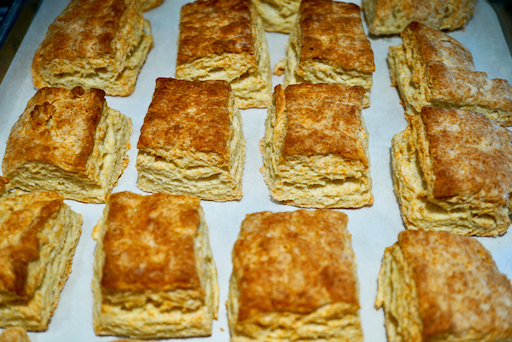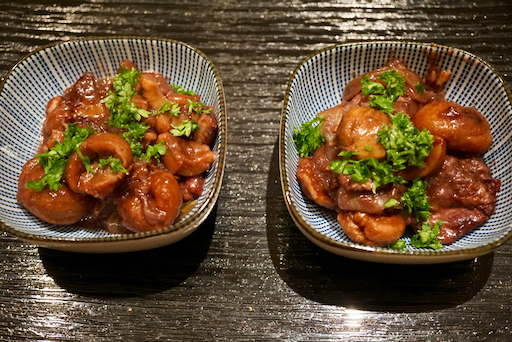1 1/2 inch cube of ginger sliced
3 Tbs. chicken stock
1/4 tsp. cardamom
4 bay leaves
1 inch cinnamon stick
3 medium onions peeled and coarsely chopped
1 Tbs. ground cumin
1 Tbs. ground coriander
1 Tsp. ground turmeric
3 medium tomatoes peeled
1 Tbs. salt
1/2 tsp. cayenne pepper or to taste
Directions:
Put the ginger, garlic, and chicken stock in a food processor with a blade. Pulse until it forms a paste.
Put several Tbs. oil in a frying pan. Add the cardamom, bay leaves and cinnamon. Heat until the spices bloom and become fragrant. Add the onions and stir until they are partially caramelized. Add the ginger garlic paste and stir until the garlic smells fragrant and the mixture has been incorporated with the onions. add the cumin, coriander, and turmeric stirring until they become fragrant. Add the potato and tomato. Mash the tomato. Cook gently until the potatoes become soft. Add the chickpeas, beans and the stewed pork with the liquid in which the pork was cooked. Cook for 20 minutes until all the flavors meld. If the curry looks too soupy reduce it on low heat until the desired consistency is reached.
Although this a variation of a previous curry recipe the slight variations makes it different somehow. The chickpeas add a slightly firm texture while the black beans add a creaminess. The potatoes absorb the curry flavor and add yet another texture. This makes a very satisfying dinner or even lunch.

















